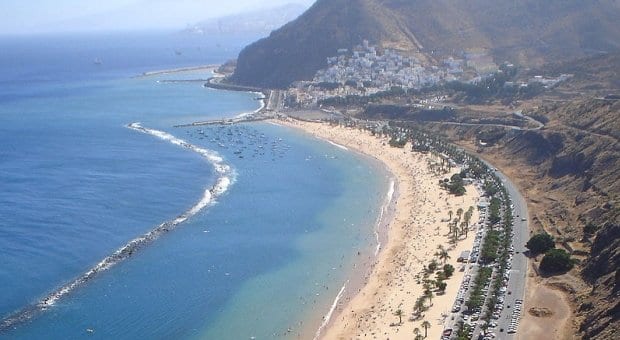
Playa de Las Teresitas in Santa Cruz, Tenerife. Credit: Jens Steckert
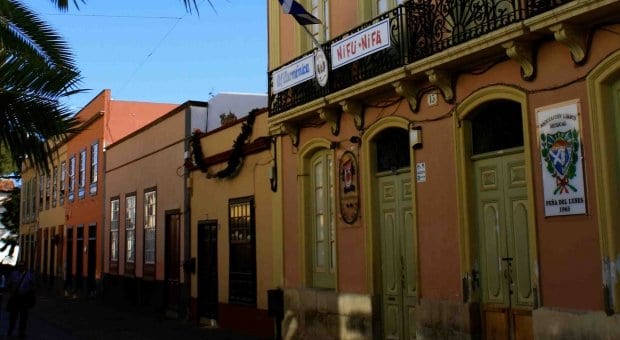
Calle La Noria restaurant in Santa Cruz. Credit: Aefa Mulholland
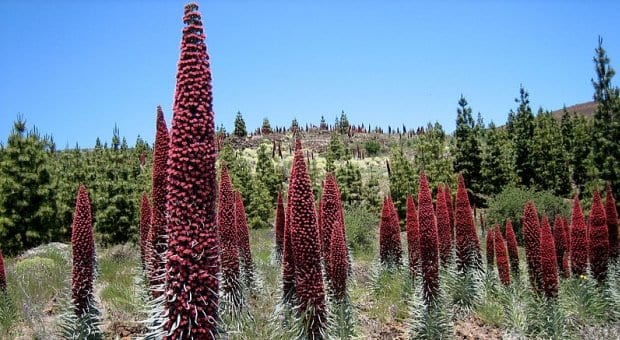
Tajinaste rojo is endemic to Tenerife. Credit: Aefa Mulholland
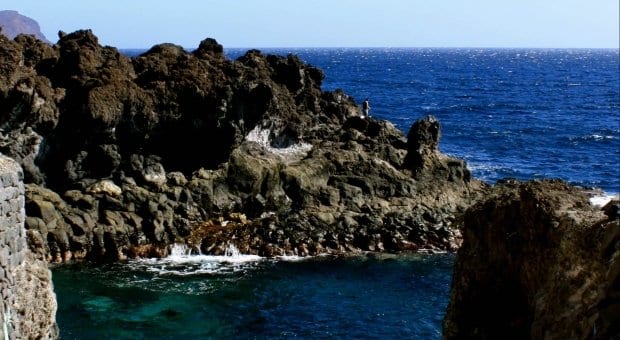
The south coast of Tenerife. Credit: Aefa Mulholland
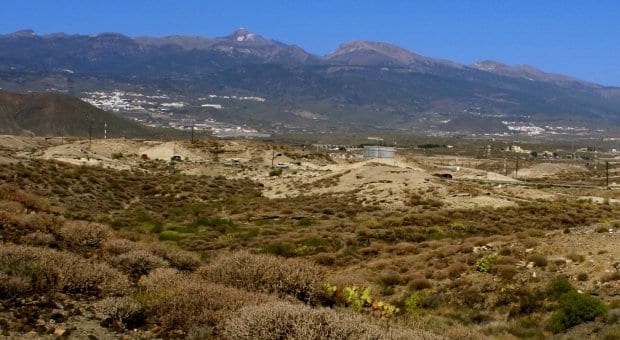
Mount Teide, Tenerife. Credit: Aefa Mulholland
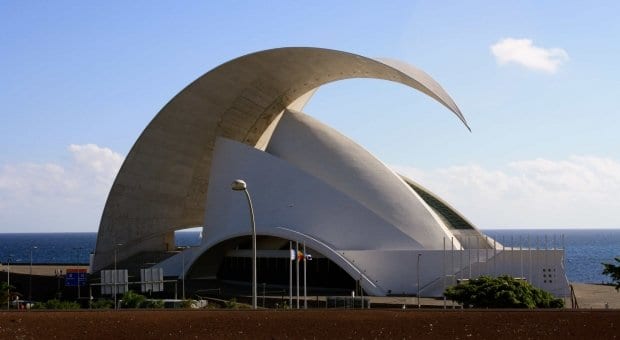
Auditorio de Tenerife in Santa Cruz. Credit: Aefa Mulholland
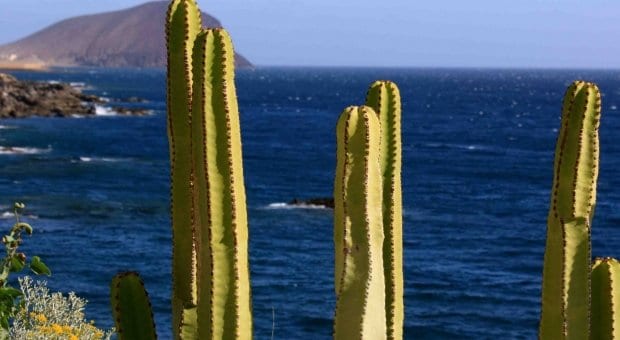
South shore cacti in Tenerife. Credit: Aefa Mulholland
When temperatures drop and Canadians start thinking about heading to Varadero and Cayo Coco, Britons and Germans flock in their shivering hordes to Tenerife, where temperatures don’t drop below 22 degrees Celsius in December. About 1,000 kilometres from Cadiz, the southernmost point of mainland Spain, but only 275 kilometres off the coast of Morocco and the Western Sahara, the island of Tenerife is the largest of Spain’s seven Canary Islands.
The Island of Eternal Spring, as the tourist brochures call it, has an incredible inventory of beaches and resort towns arrayed round its hem, while its hinterland boasts stark stretches of desert, stunning mountain villages and dramatic volcanoes. Tenerife is a cosmopolitan spot. Geographically, it’s part of Africa, but the towns and villages feel distinctly European, the mixture giving it something of a Caribbean multicultural ambiance.
Even arrival on this 2,000-square-kilometre island is breathtaking. You can reach the island by boat, although you’d better stack up significant vacation time — it’s 50 hours by ferry from Cadiz — but most visitors fly west past Portugal’s Algarve and British-controlled crag, the Rock of Gibraltar, and out over the open ocean. Morocco forms a long, low line along the horizon to the east, as the flight path takes you southwest over the islands of Lanzarote, Fuerteventura and Gran Canaria. Then, abruptly, Spain’s highest peak, Mount Teide, rises from the ocean. The 3,718-metre-high sleeping volcano is quite the attention seeker: its smoulder caught the attention of Columbus as he sailed past in 1492; Raquel Welch was lured to shoot One Million Years BC on its flanks; and, more recently, it hosted Sam Worthington and Liam Neeson for the filming of 2010’s Clash of the Titans and the 2012 sequel, Wrath of the Titans. The volcano had its last mega temper tantrum when it erupted in 1909.
While most visitors still reach Tenerife on one of the plethora of budget and charter flights that seem to arrive every five minutes all winter long, Tenerife has begun to shake off its reputation as a trashy tourist destination. That side of Tenerife’s multifaceted personality is still represented by brash resort town Playa de las Américas, with its fantastically tacky clubs and gay bars, and in the strictly non-Spanish-speaking tourist villages and resorts that confetti the southern coast. So, while the package holiday experience is definitely here in spades, buckets and in clubs that you thought had been extinct since 1972, so too are an abundance of spots that offer glimpses of the real Spain. The island packs in everything from picturesque fishing villages perched on idyllic coves, to sleek shopping opportunities in bustling Canarian capital Santa Cruz de Tenerife, to the joie de vivre and active gay scene of youthful university town La Laguna.
So, pick your kind of vacation; make like Raquel and romp round Mount Teide, or explore the myriad beaches with their volcanic sands and strange rock formations, or shop Santa Cruz and then take a sidewalk table outside the colourful colonial buildings of Calle La Noria, or join the crowds at the happy, hectic beaches of the southern coast. Just don’t make Columbus’s mistake — this charming island is too enticing to pass by.
Bars and Clubs
Tenerife’s gay bars are clustered around Playa de las Américas’s touristy Veronicas strip; in capital Santa Cruz and in studenty La Laguna, which is essentially a suburb of Santa Cruz; and in northern city Puerto de la Cruz. The majority of bars are mixed, but La Laguna’s Qué + Da in Plaza Periodista is the island’s only women’s bar. In Puerto de la Cruz, try friendly Pequeno Buda Bar (on Calle Iriarte); in La Laguna, visit the mixed club Barock; and in Las Américas, start your night at Playaflor’s terrace bar (see below) and follow the crowd.
Accommodations
For a gay stay on the south side of the island, Playaflor Chill-Out Resort in Las Américas is an exuberant option beside the beach, with 23 bungalows, a bar, pool and a predominantly gay male clientele. For a quieter stay on the more sedate, but stunning, north coast, Hotel Botanico is an elegant, old-school five-star pile in a charming fishing port with a gorgeous stretch of volcanic beach.
For more info, visit Ternife Tourism.
Gran Canaria is the most gay-friendly destination in the Canary Islands. For more insight and travel advice about Gran Canaria, see our gay Grand Canaria guide.
For map locations and website links to more than 60 places of interest, see our gay Gran Canaria listings pages.
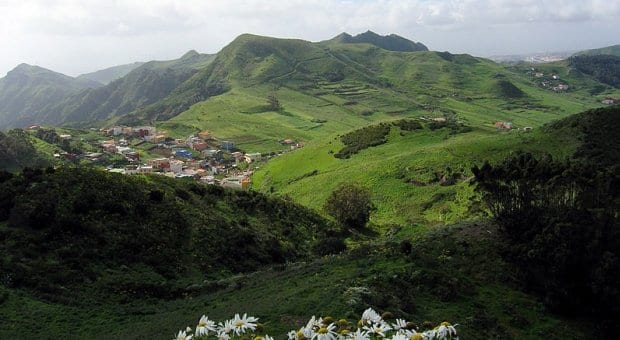
 Why you can trust Xtra
Why you can trust Xtra